Families, Flu, and Extreme Photography – Part 1
I have recently got back from my first family holiday since my son was born, staying in a lovely cottage managed by my mother in the village of Cwm Penmacho in rural Conwy. This little village lies at the head of the Machno Valley, about 6 miles from the tourist trap of Betws-y-Coed, and a short hop (albeit with about 1200ft of ascent) from Blaenau Ffestiniog.

I was promised at least one day free of all childcare jobs, which I hoped to do some black and white work up the top of Rhiw Fachno – the slate quarry at the head of the valley, where an abandoned village lies after the mines closed in the 1960s.
My equipment list looked like this:
- Canon EOS 60D (my workhorse).
- Canon EOS 300 (my main EOS for film work).
- Sigma 10-20mm f/3.5 (Favourite lens).
- Canon EF-S 18-55mm f/3.5-5.6 (for quick work and family shots).
- Canon EF 28-80mm f/3.5-5.6 (for the EOS 300).
- Various P Type Filters
- Practika TL-5B with Vivitar 28mm f/2.5 (for IR work).
- Vivitar UWS
- Vivitar Series One PZ480 (A new advanced compact I have been meaning to try.
- Quickshot Di-4401 (Toy Camera that I had film in knocking about).
- A bag full of Konica IR 750, Adox Silvermax, Ektachrome, and many more…
The best laid plans and all that. Here’s what happened…
Wednesday
The journey was promising, remarkably unstressful considering we were lugging 2 bags, a camera bag, a laptop, hand luggage, a huge amount of picnic, and a 15 month old child with his own bag full of toys. I will stress, at this point, that I had an absolutely lovely time, but in terms of any kind of planning… …well that went down the drain as you will see.
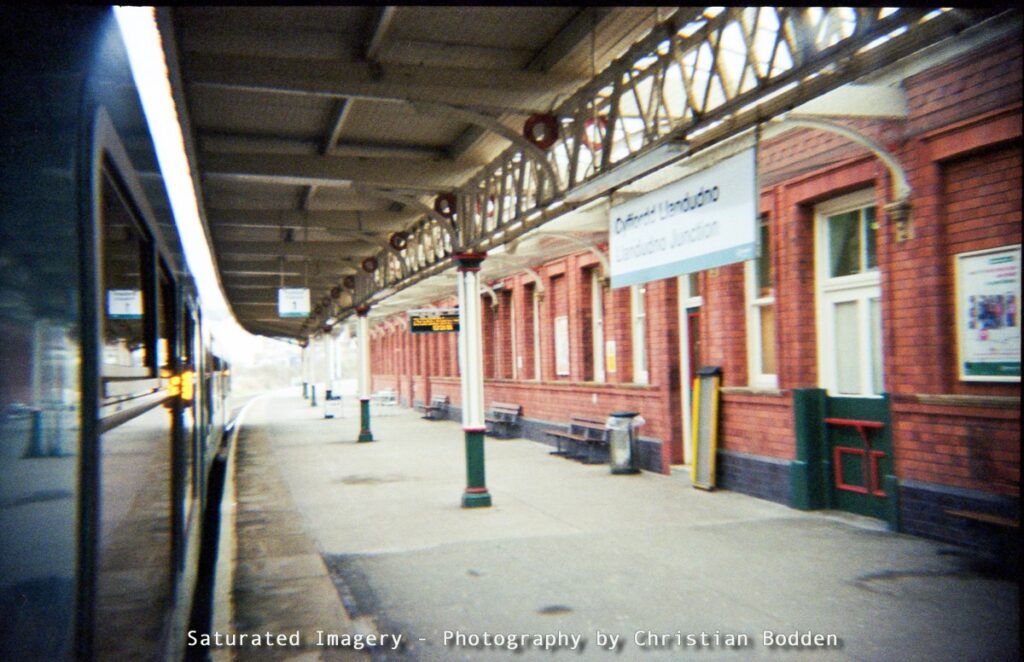
One of my favourite images is, however, this one of Llandudno Juction from the train, taking with the Quickshot Di-4401 with its lovely plastic-lens blur. It is shots like this which sometimes capture more of the aura of a place than any carefully composed technically brilliant shot.
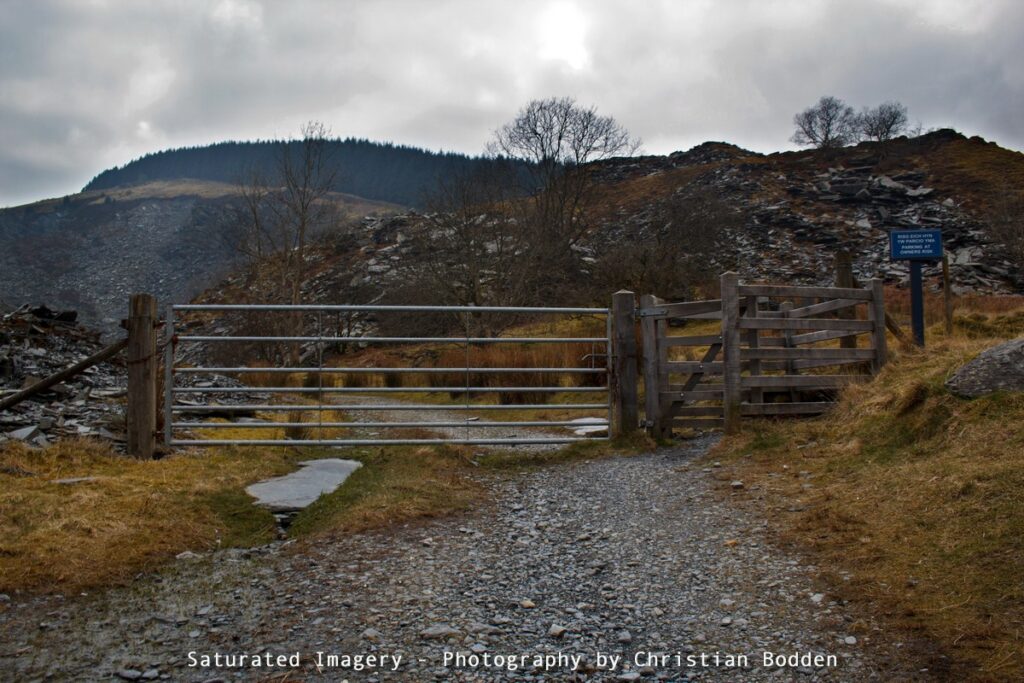
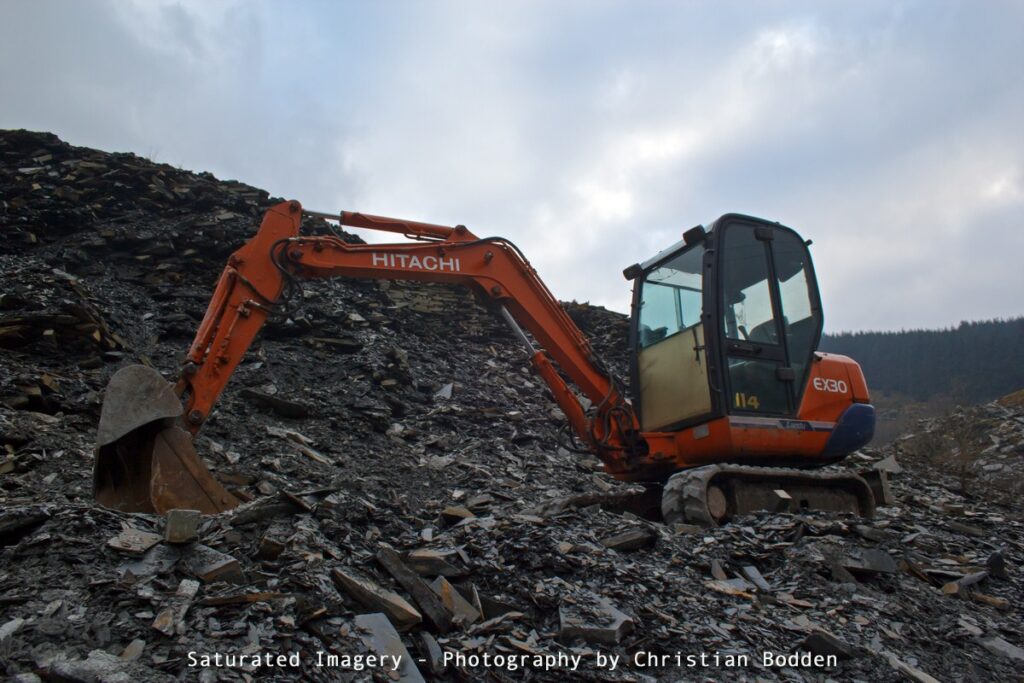

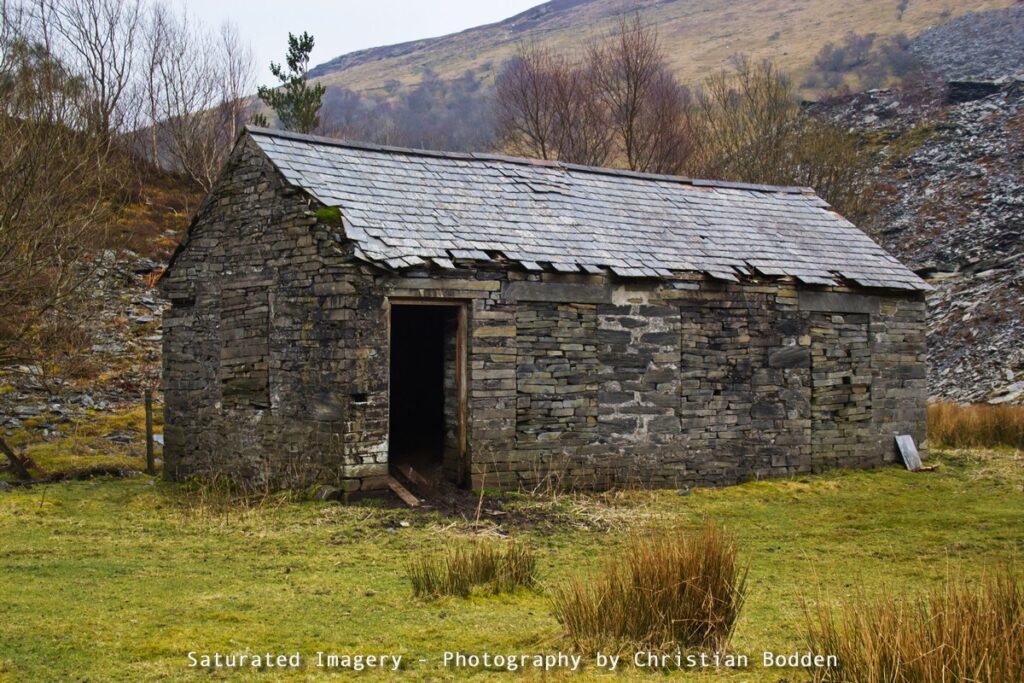
We got into Cwm Penmachno mid-afternoon on Wednesday, in typical Welsh weather conditions of cloud and hill-fog – not overly inspiring, but ok for some dark and gloomy post-industrial work in slate quarries. Other than the film shots from the journey, I didn’t really do that much on Wednesday, except for some family shots in the quarry, and a few tests to get a feel for the place.
Thursday
Having a toddler means early mornings, something that I am not usually very good at, and something that has in some ways held back some of my work. So, having already been awake for a good hour and a half, when the sun peaked over the layered vista of Pen y Bedw and Moel Marchyria I was ready to dash out the door, fully kitted up to clamber onto the wall at the other side of the road and get this beautiful contre-jour sunrise shot.
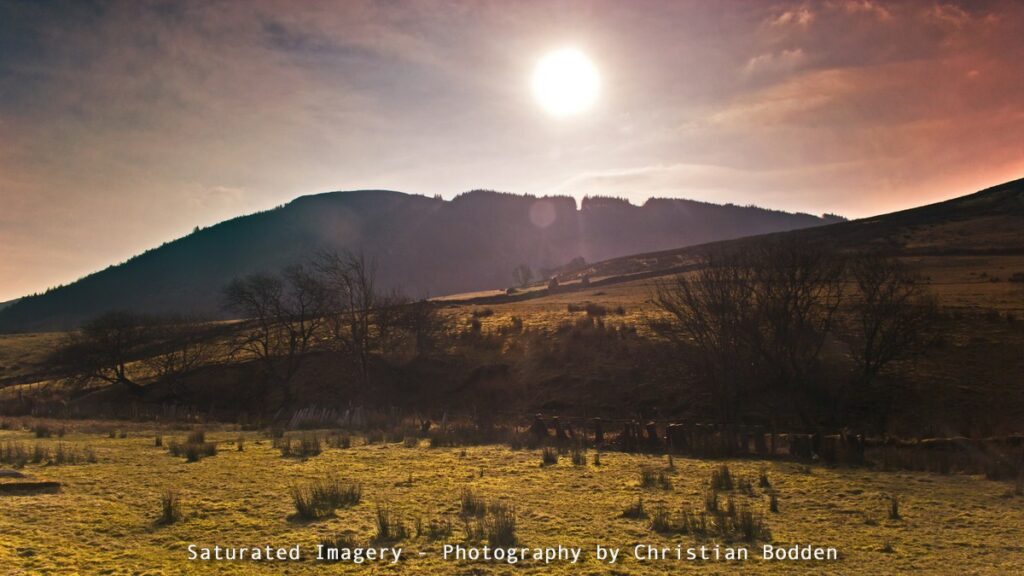
For this I used the 18-55mm lens rather than my wider Sigma, because I could stack more filters without getting the edges of the filter holder in the frame. This image features some fairly serious filtration – a polariser to boost the colours was first. Then, to hold back the skies, I used stacked ND2 and ND4 graduates to give me a stepped range of filtration. I took a fair few shots, and subjected the best one to some intensive layers editing in Elements. The number of filters has introduced some flare and loss of definition, but this has worked in this instance, making a lovely painterly image.
The panorama at the start of this post was shot this morning as well, where the sunrise struck the other side of the valley. I took a lot of shots from the back yard due to the circumstances which will unfold. It is a good thing it is such an inspiring view…
After a bit of a quick trip to Llanrwst for general shopping and some housekeeping during the day we went for a walk up the the Quarry again. My son went to sleep and my partner said she felt quite tired so they went home and I managed a couple of hours in the quarry.
Rhiw Fachno was first quarried in the early 19th Century and closed in the 1960s. During this time the village of Cwm Penmachno was a busy place and there was a further almost self-contained village on top of this quarry witch a school, shop and chapel. This is where I had hoped to shoot, but getting up there is quite a trek which I didn’t have time for.
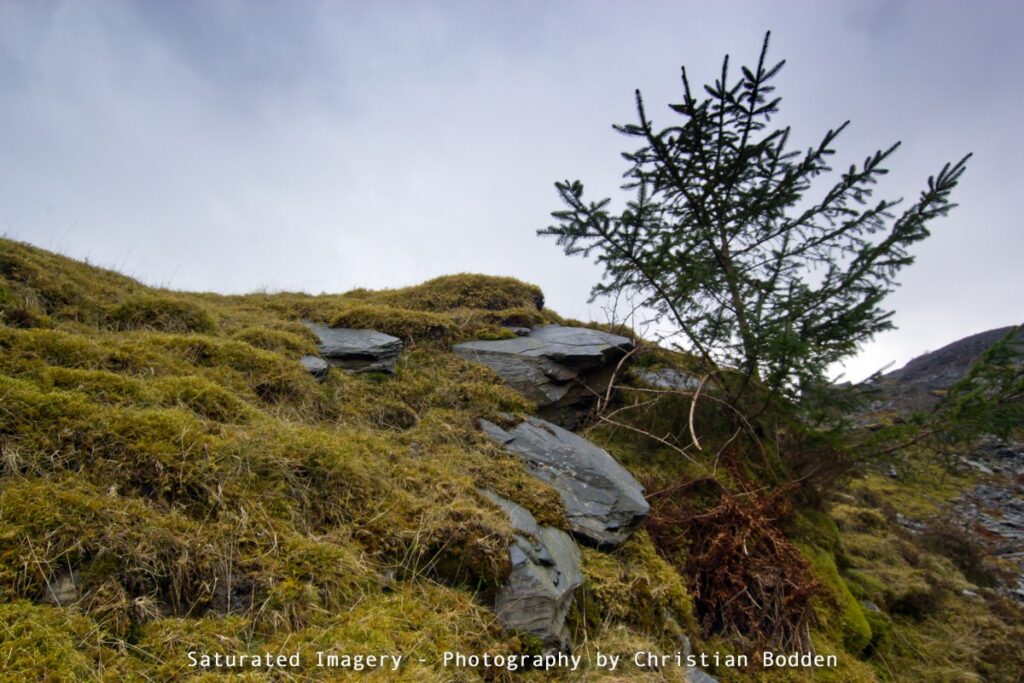

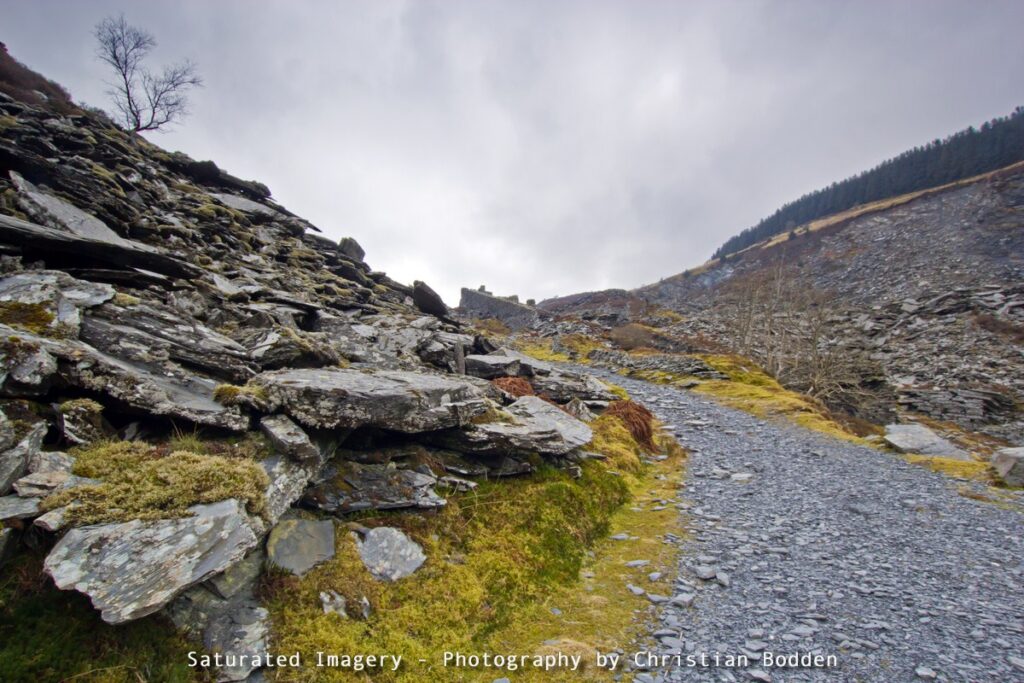
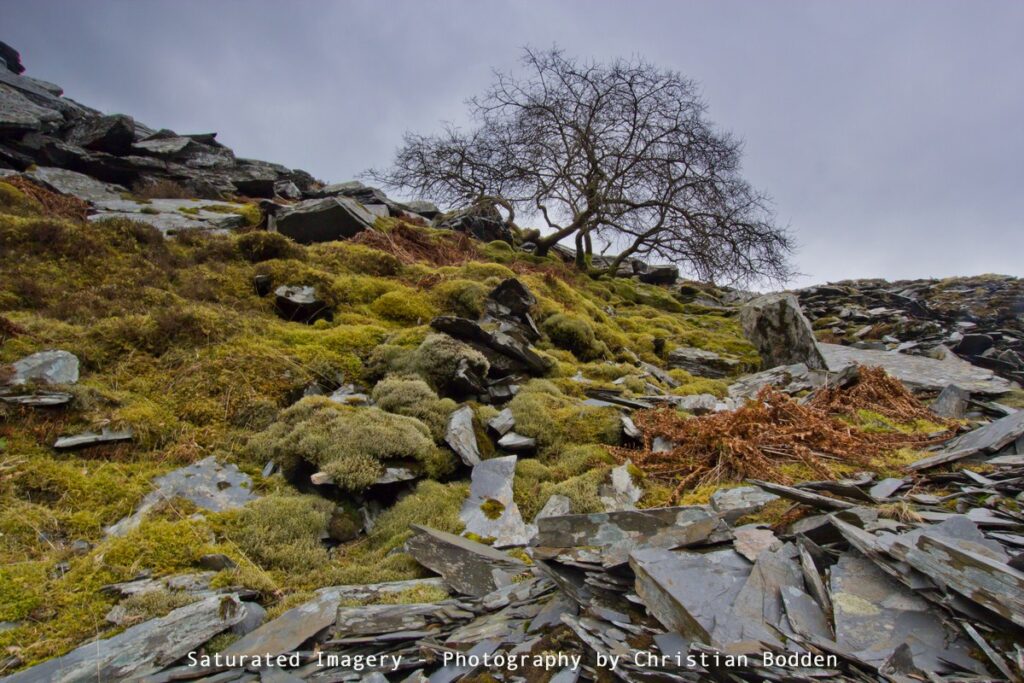
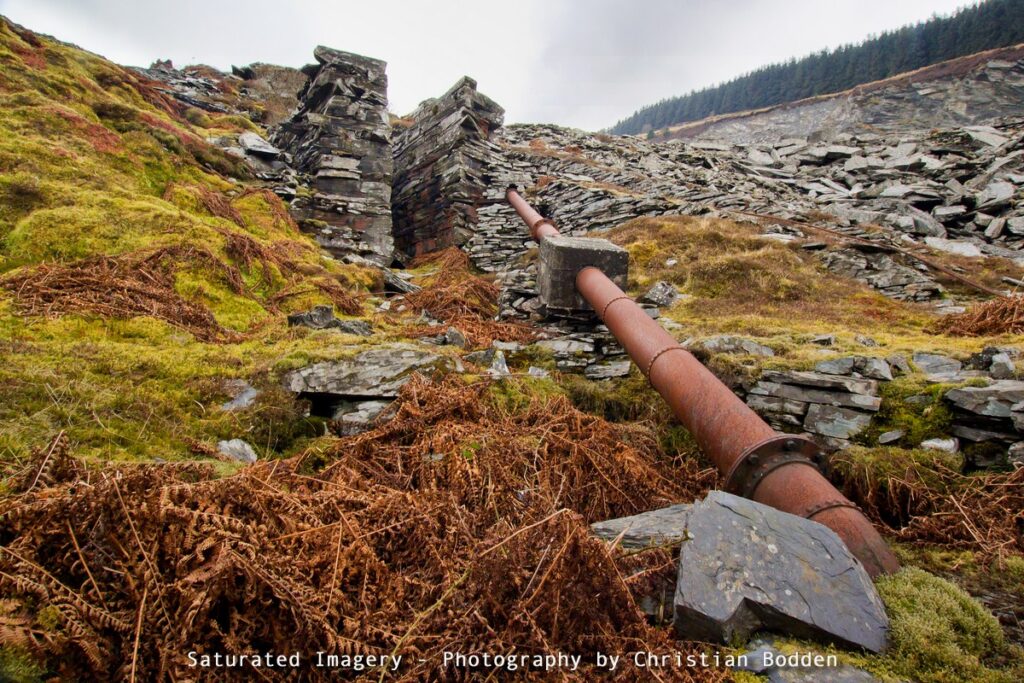
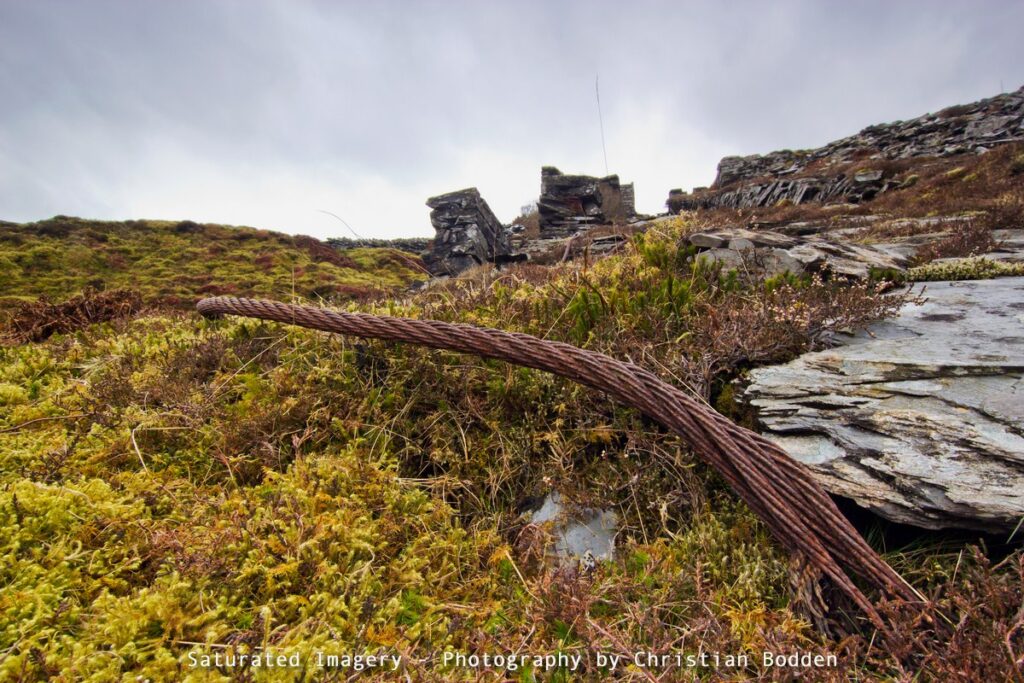

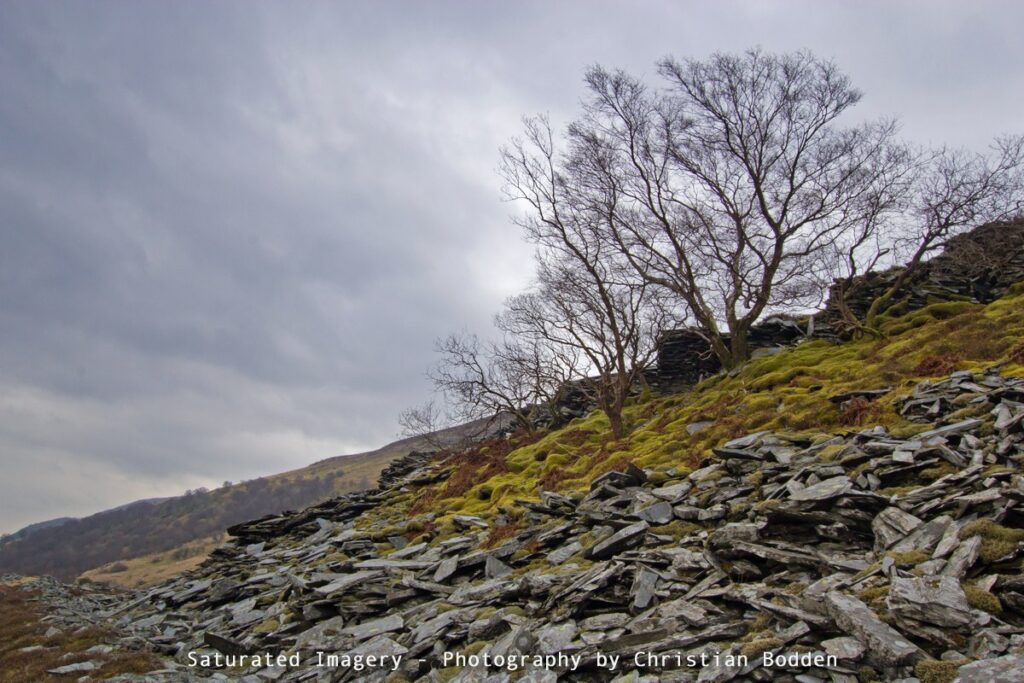
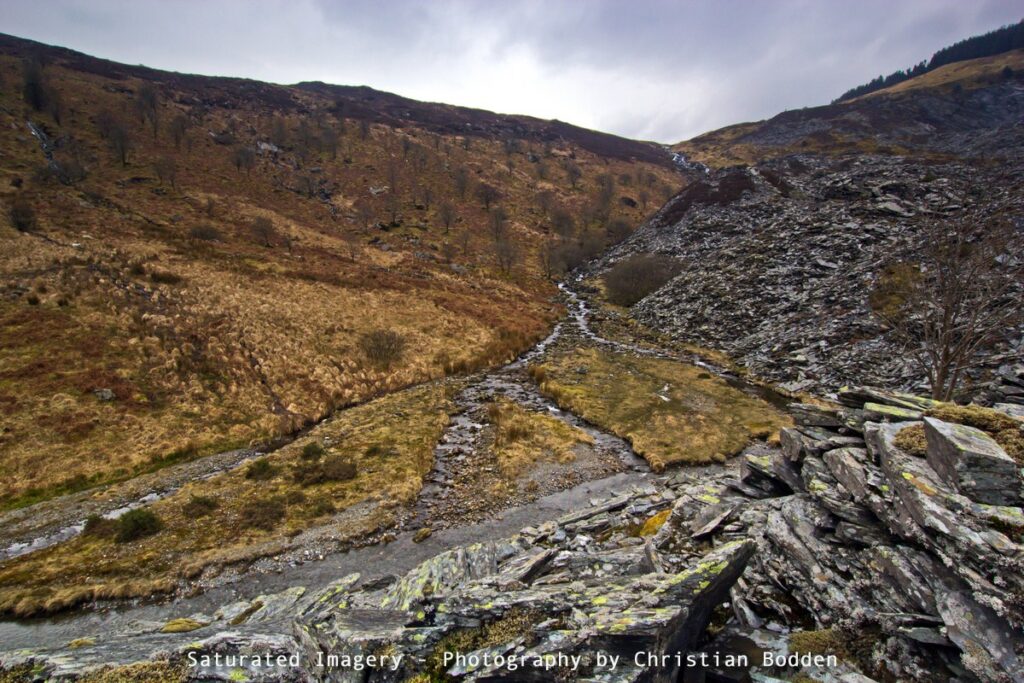
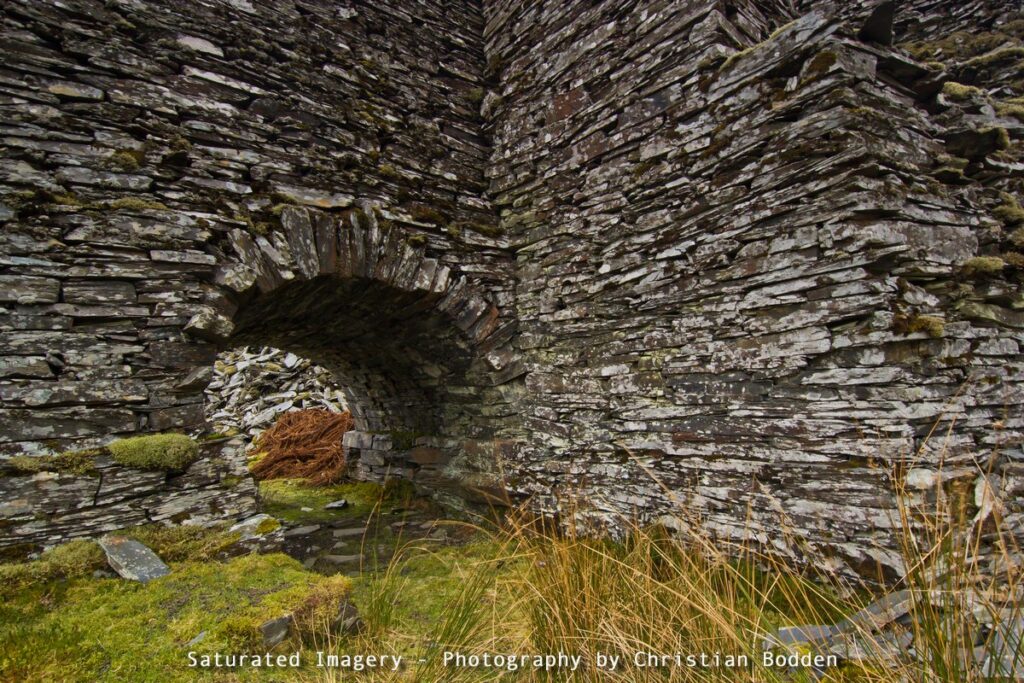
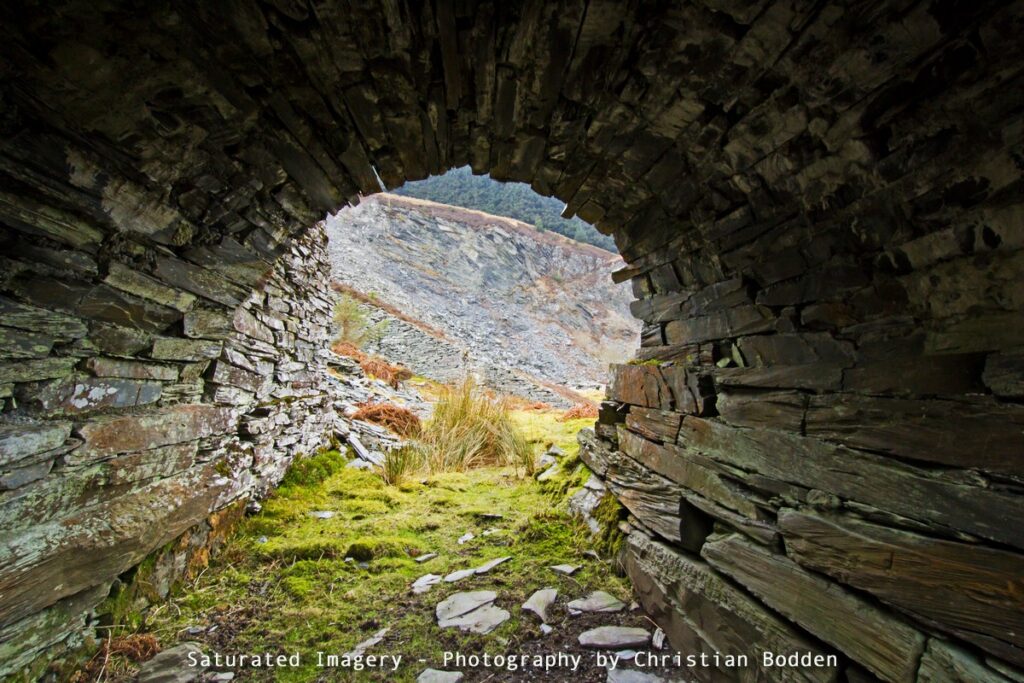
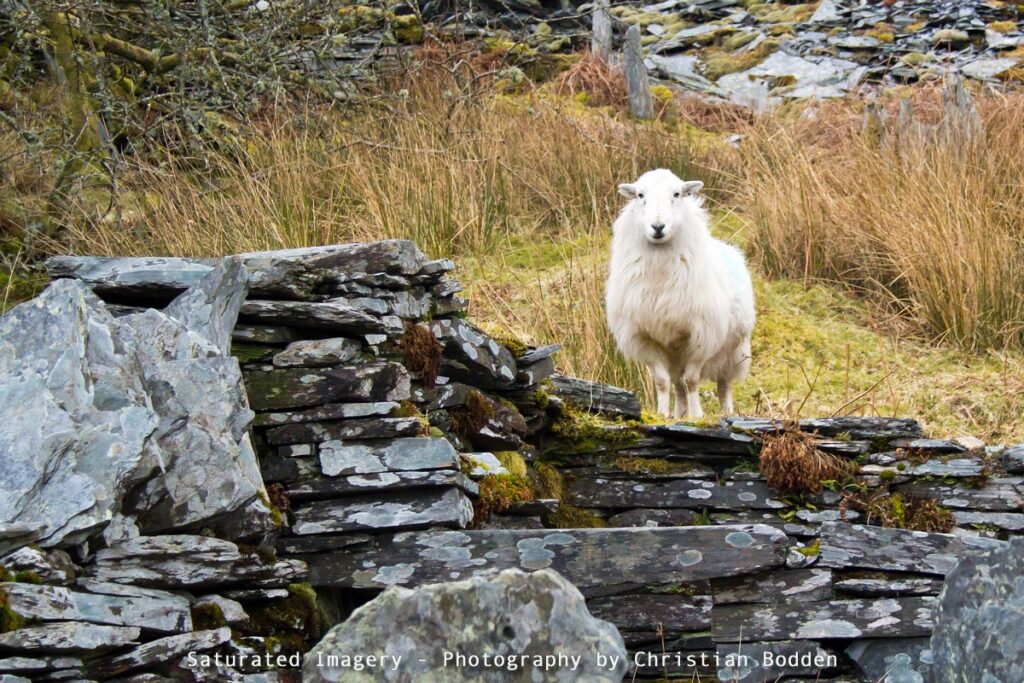
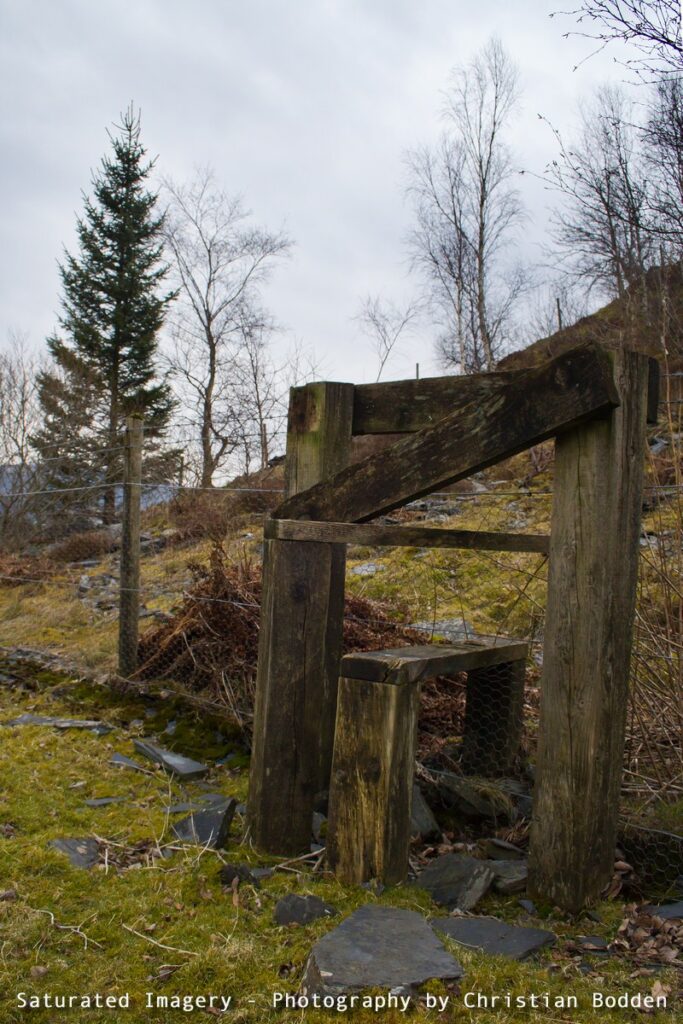
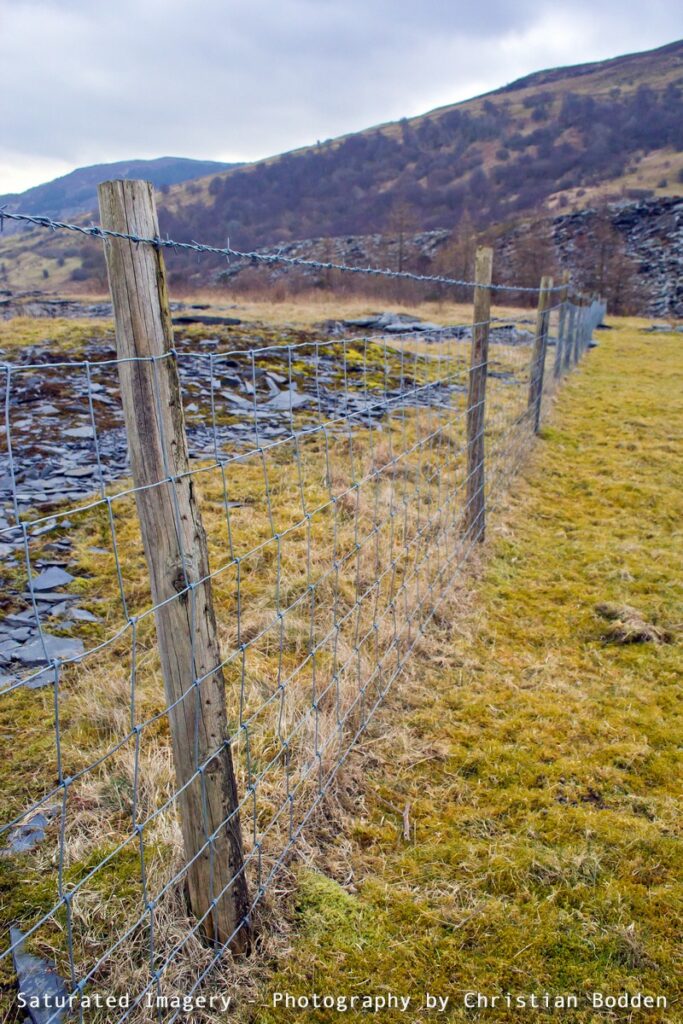
Irritatingly, my Sigma 10-20mm developed a fault and the focussing went to shot. Manual focussing is all well and good, but sometimes a lot of unwanted trouble.
Friday
After the irritating issue of my misfocussing Sigma, Friday began to get even more chaotic. We woke up to this; very pretty, but not entirely practical for a holiday… Compare with the first view of these hills!

…And this was just the start. My Partner went to the doctors and was diagnosed with ‘flu and a chest infection and told to stay indoors. Still, we had a lovely warm wood burner and some whisky.
The aforementioned whisky was, I suspect, the root cause of some slightly crazy antics that night. At about 11 o’clock I decided that I hadn’t been outside enough and decided to go for a stroll. The snow that had been fluttering about all day had become a full on blizzard, the village is lit by only a few antiquated sodium lamps… …what could go wrong?
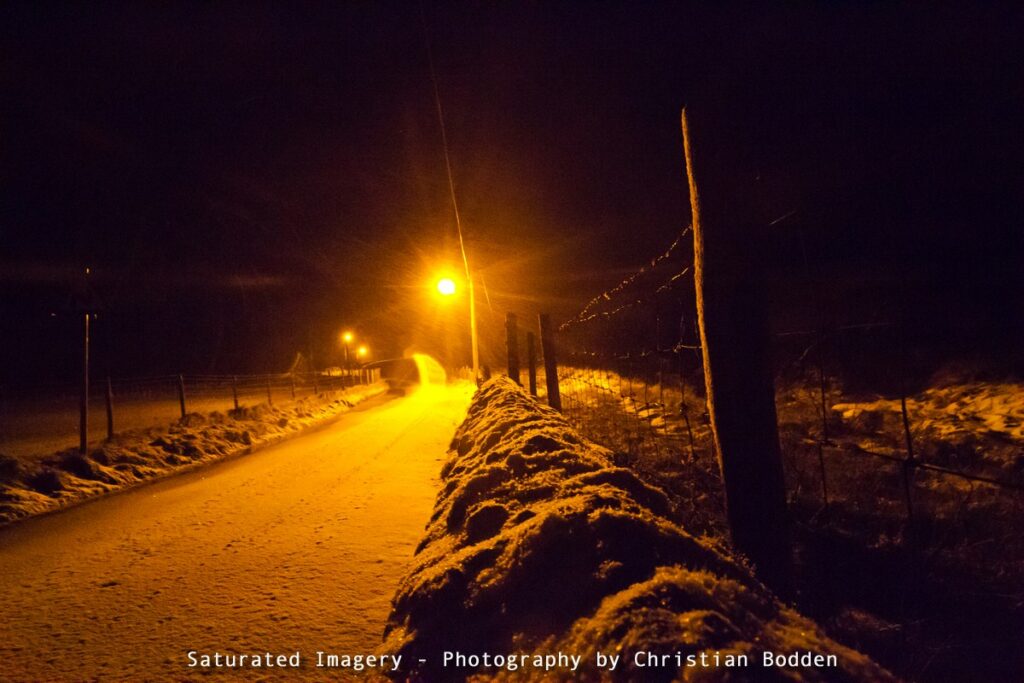
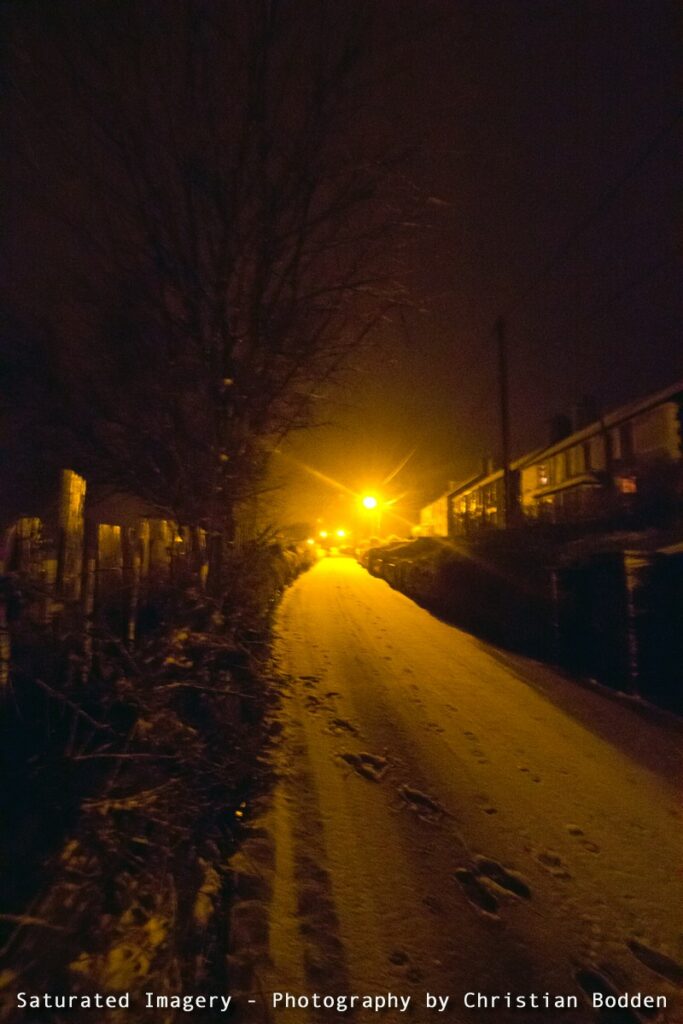

Actually nothing did, thankfully, and I came back with these images. This has really tested the low-light capabilities of the EOS 60D, and worked quite well I think. What is interesting about this kind of very low light shot is how the sensor responds to colour. comparing it to what your eyes see is futile – your eyes can’t see a lot in this low light and blinding snow. They certainly can’t pick up colour. One of the reasons that low light photography is so captivating is often that the camera sensor does not lose the colour sensitivity in low light like your eyes do. But here, all you can see is orange from the intensity of the sodium lamps which emit light of one wavelength (589nm). I experimented with the white balance and colour variations, and managed to remove this to a dull grey but this brought in a lot of blue noise in the shadows. These lights emit no other wavelengths or light so there is essentially no white to balance. I toyed with making them black and white, but decided that they may as well be black and orange.
Back soon with the next instalment of my Holiday – Saturday to Monday.